Unusual homes boasting the maximum level of sustainability have become a notable trend in India. Architects in the world’s most populous country readily experiment with the form of the conventional house developing sustainable and self-sufficient dwellings.

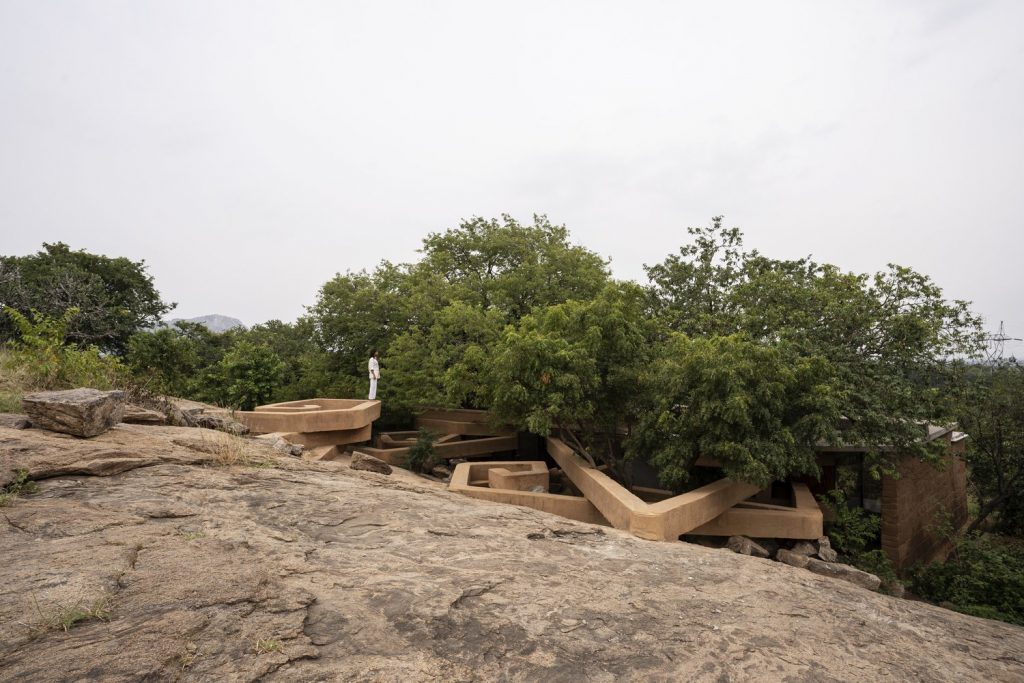
Chuzhi by Wallmakers (also header image)
Commissioned to make use of an overlooked site in the village of Shoolagiri, that had been previously considered unsuitable for a building, studio Wallmakers created a snake-like house whose design and dimensions were derived entirely from the position of the three large Tamarind trees and the rock formation on the site.
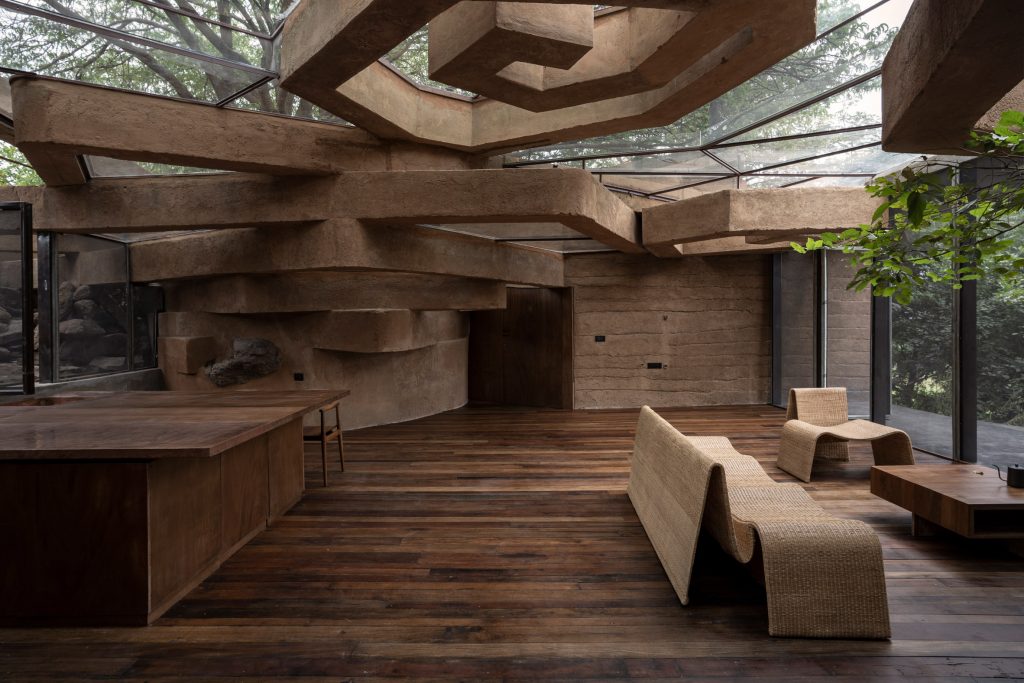
Chuzhi by Wallmakers
The residence is described by Wallmakers as a piece of “camouflage architecture”, meaning it is intended to merge into the landscape, rather than dominate it. Named Chuzhi, “whirlpool” in Malayalam, a language spoken mainly in the southern Indian state of Kerala, the dwelling is partly embedded in a steep and rocky site.

Chuzhi by Wallmakers
The subterranean home is comprised of spiralling elements that were partly constructed from 4,000 concrete-filled plastic bottles, which were collected by the studio within a two-kilometre radius of the site, placed around the trees on the site and covered with earth.
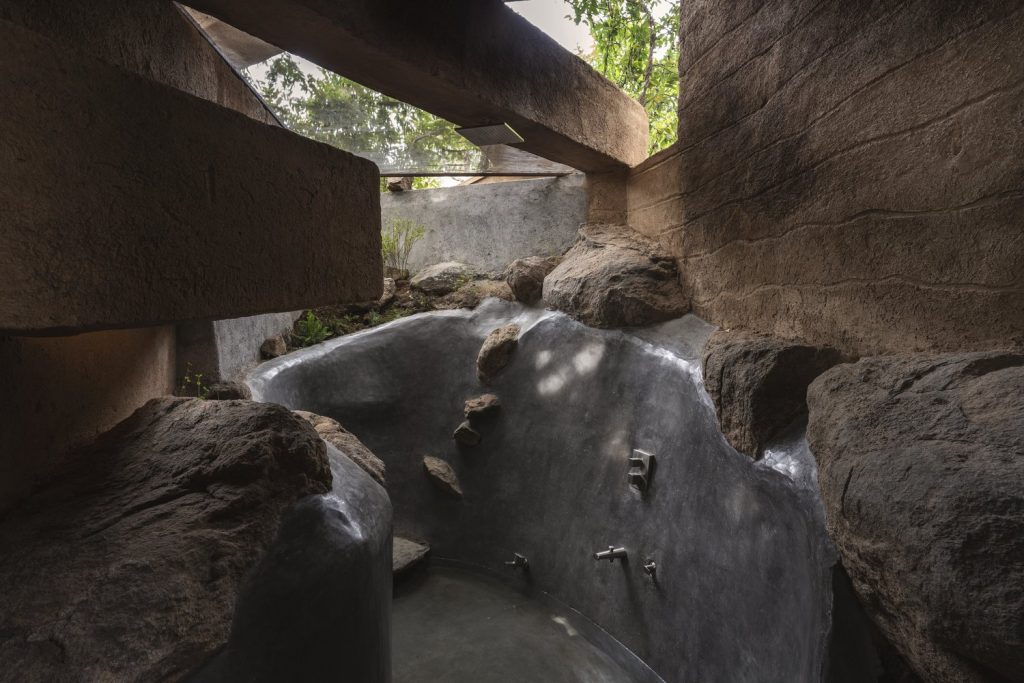
Chuzhi by Wallmakers
The winding also help define the different living spaces of the two-bedroom residence designed with an open layout and minimalist interiors. Some of them also double up as useable furnishings such as cupboards and seatings. Other standout details of the interior include the floors that are made of reclaimed wood and complemented by wooden and woven furniture.
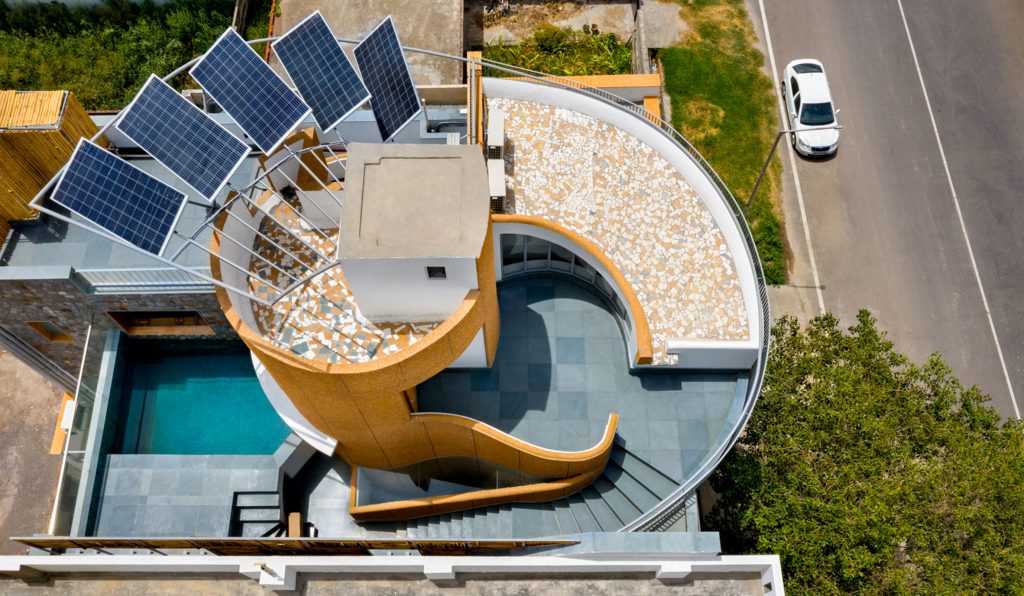
The People Tree House by Archiopteryx
Architecture studio Archiopteryx has created a home, which has been carefully designed to control sunlight exposure throughout the year and to collect and utilise rainwater. Called The People Tree House and built in Noida, in Uttar Pradesh, a planned satellite city of Delhi, the home was designed for medical entrepreneurs and is placed above a clinic that occupies the basement and ground floors.
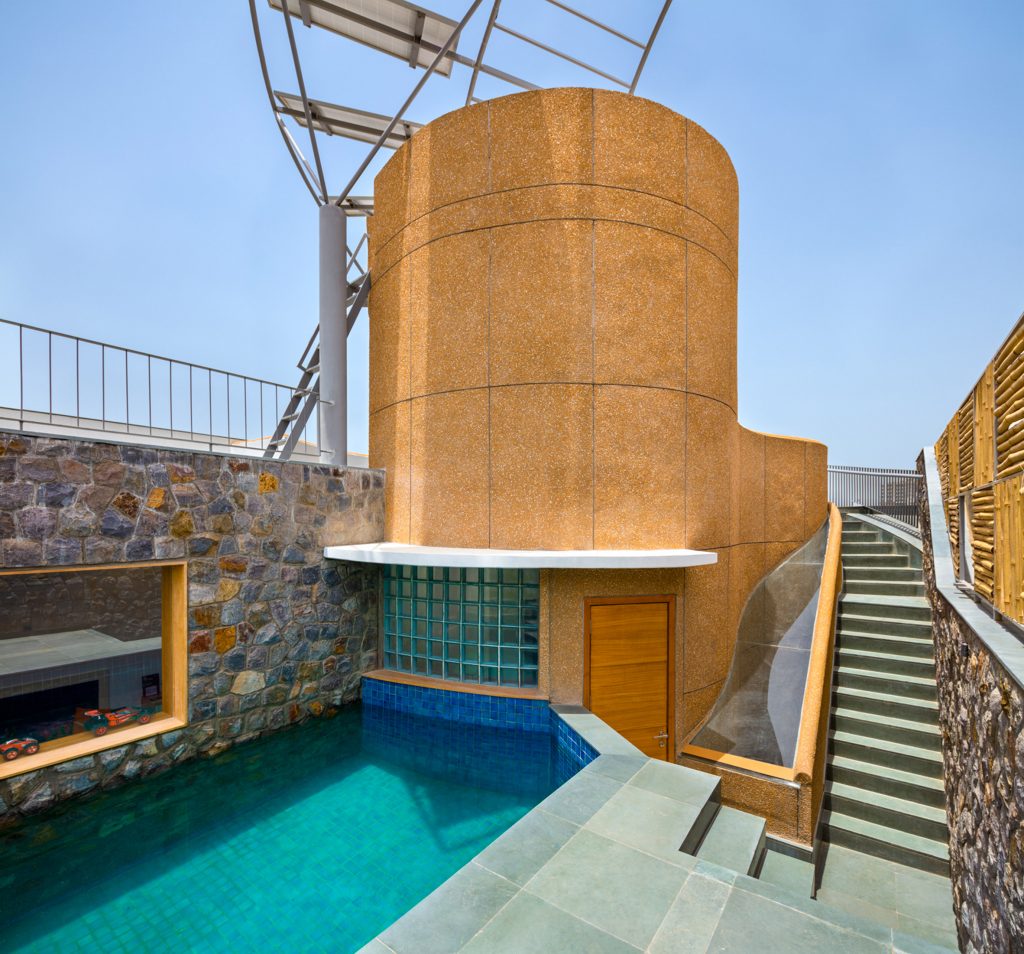
The People Tree House by Archiopteryx
The building’s design is characterized by a rooftop splash pool and a curved ramp, which along with balconies containing pools and planters, was developed to collect rainwater. The rooftop is accessed via an elevator and a spiral staircase, both contained within a cylinder located in the center of the home. Five solar panels extend the shape of the spiral staircase into the sky continuing the spiral motif.


The People Tree House by Archiopteryx
The water is collected in a tank at an upper level, which is connected to a rainwater manhole below ground with a bright red irrigation pipe that runs through the house, at points functioning as a staircase handrail. When required, stored water is diverted to the home’s upper levels, creating a cycle of collect-irrigate-store-reuse.
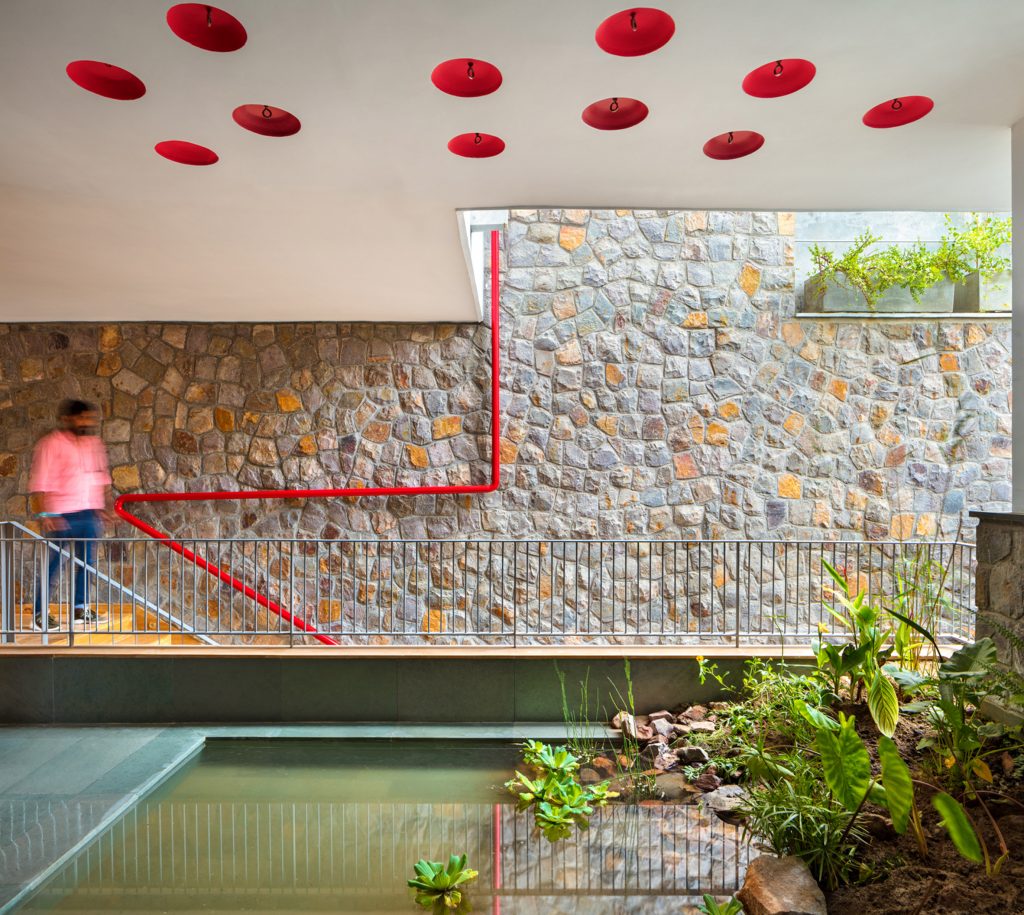
The People Tree House by Archiopteryx
The building focuses on the effects of nature and the natural, on form and function, and on the quality of life of the human being. Apart from harvesting rain-water via age-old techniques, the building also generates energy, recycles water and irrigates planted areas.
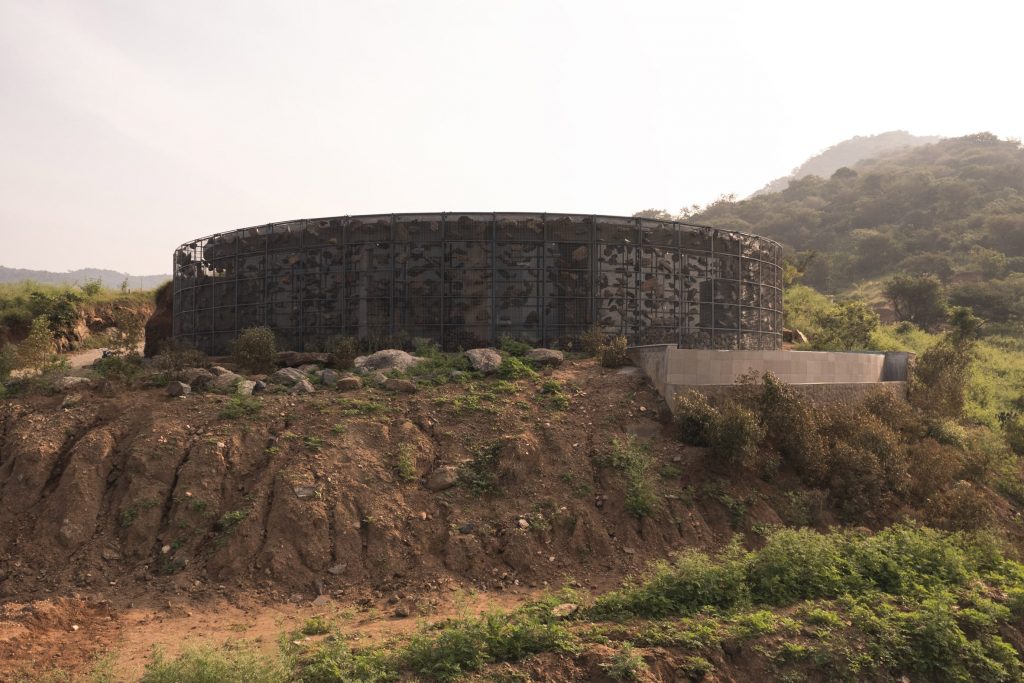
The Infinite Rise by Earthscape Studio
Architecture practice Earthscape Studio has placed The Infinite Rise holiday home on an elevated, rocky site near the village of Anaikatti in southern India. Looking to disrupt the site as little as possible, the architects dug into the land to create a partially sunken, semicircular home, wrapped by a gabion wall to help it blend in with the surrounding mountain ranges.

The Infinite Rise by Earthscape Studio
The spaces are designed facing the valley with an open courtyard in the middle, which helps in natural lighting and ventilation inside the building. The main challenge the team had to face was designing a building with a great view, while considering the direct wind flow the site is characterized with. The wind flow here might be quite heavy for a glass partition, making it rattle loudly. As a result, the architects came up with an idea to use a gabion wall, where the rocks are placed according to the anthropometrical activities inside the spaces.
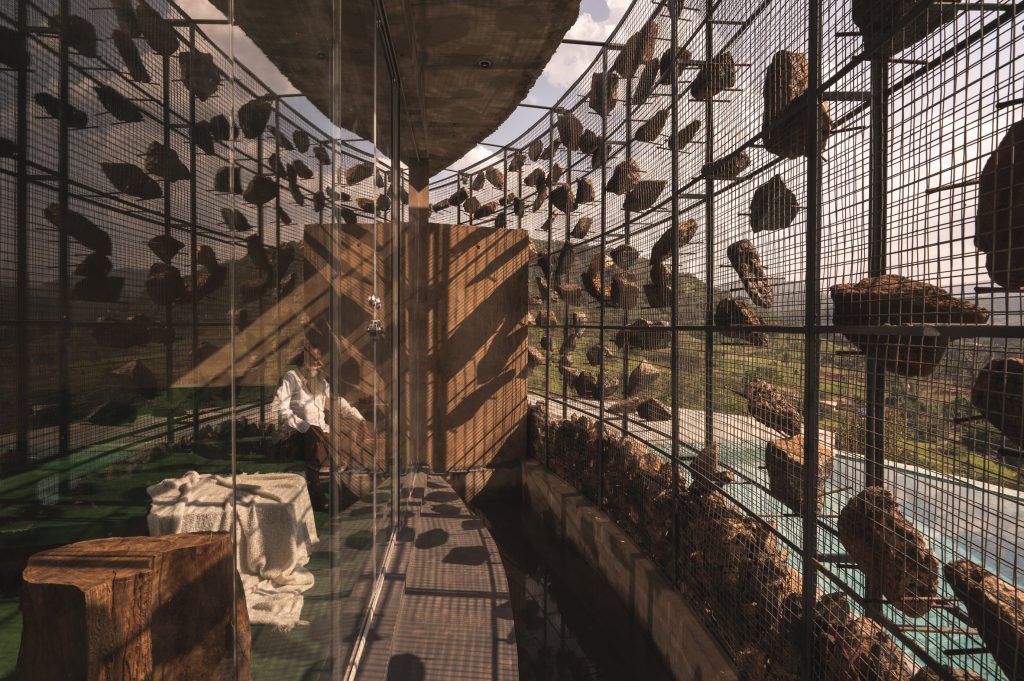
The Infinite Rise by Earthscape Studio
All the rocks used in the gabion wall are collected from the site, and so is mud that is utilized for poured earth walls between the living spaces. The doors and furniture throughout the building are made using reclaimed wood collected from the scrap.
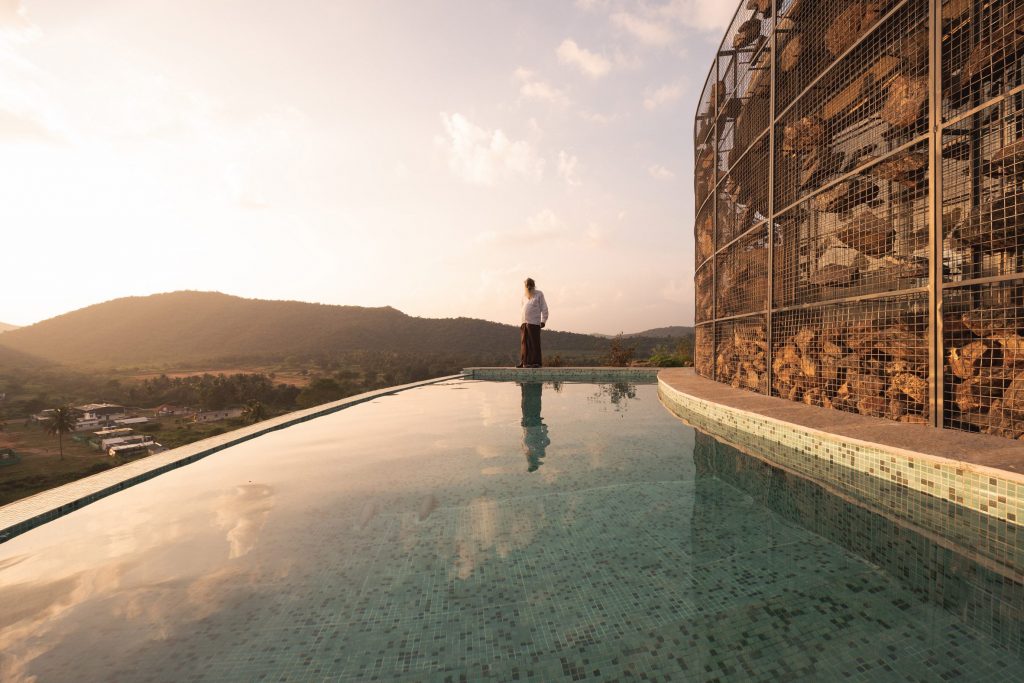
The Infinite Rise by Earthscape Studio
During summer, the place gets really hot. To avoid that, the floor finish is made of green oxide, which helps in keeping the spaces inside cooler. The water body in between the room and the gabion wall serves to reduce the temperature of the hot air as it travels from outside to the inside, while an open courtyard helps in maintaining cool temperature inside.